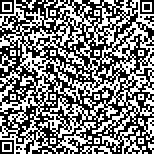| 耿庆超,林 鑫,冯晨曦,等.基于个体绝对发病风险的河南省非吸烟人群肺癌筛查策略成本效用分析[J].中国肿瘤,2024,33(5):373-381. |
| 基于个体绝对发病风险的河南省非吸烟人群肺癌筛查策略成本效用分析 |
| Cost-Utility Analysis of Lung Cancer Screening for Non-Smokers in Henan Based on Absolute Risk |
| 投稿时间:2024-01-19 |
| DOI:10.11735/j.issn.1004-0242.2024.05.A006 |
|
 |
| 中文关键词: 肺癌 非吸烟者 低剂量螺旋CT 风险预测模型 成本效用 河南 |
| 英文关键词:lung cancer non-smokers low-does computed tomography risk prediction model cost-utility Henan |
| 基金项目:河南省重点研发专项(221111310200);河南省医学科技攻关计划省部共建重大项目(SBGJ202001004);河南省科技发展计划(232102310166) |
|
| 摘要点击次数: 358 |
| 全文下载次数: 173 |
| 中文摘要: |
| 摘 要: [目的] 评估对不同肺癌发病风险的河南省非吸烟人群开展低剂量螺旋 CT(LDCT)筛查的成本效用、收益和风险,判断最佳风险阈值或适宜筛查个体。[方法] 基于河南省LDCT筛查队列数据和前期建立的风险预测模型计算非吸烟个体1年内肺癌绝对发病风险,根据风险值将人群分为高风险组、中高风险组、中低高风险组和低风险组,风险阈值分别为≥0.272 5%、0.110 0%~0.272 5%、0.012 4%~0.110 0%和<0.012 4%。通过建立决策树Markov模型,评估对不同风险阈值下的非吸烟个体进行每年度LDCT筛查的卫生经济学效果。主要评价指标为增量成本效用(ICUR),即每增加1个质量调整生命年(QALY)需要的成本。次要指标包括减少的肺癌死亡人数、增加的生命年数、过度诊断肺癌人数、辐射相关肺癌人数和假阳性结果人次。采用单因素敏感性分析,检验参数不确定性对研究结果的影响。 [结果] 以3倍于2021年中国人均国内生产总值(GDP)(242 928元)为支付意愿阈值,与不筛查相比,仅对1年内肺癌绝对发病风险≥0.272 5%的非吸烟个体实施每年度LDCT筛查具有成本效用优势,ICUR为141 808 元/QALY。敏感性分析结果表明,阈值为0.272 5%的策略具有成本效用优势的概率为66.27%。当贴现率超过5.4%或假阳性负效用超过0.022时,该策略不再具有成本效用优势。随着风险阈值的增加,LDCT筛查避免1例肺癌死亡和增加1个生命年数需要的筛查次数逐渐减少,且产生的过度诊断人数、辐射相关肺癌人数以及假阳性结果人次也呈下降趋势。[结论] 对1年内肺癌绝对发病风险≥0.272 5%的非吸烟个体进行每年度LDCT筛查具有成本效用优势,可以最大化平衡LDCT筛查收益和危害。 |
| 英文摘要: |
| Abstract:[Purpose] To evaluate the cost-utility, the benefits and harms of lung cancer screening in the non-smoker population based on absolute risk in Henan Province. [Methods] The absolute risk of developing lung cancer in 1 year was assessed by the established risk-prediction model using the data of the low-dose computed tomography(LDCT) screening cohort in Henan Province. The non-smoker individuals were classified as high-, medium/high-, medium/low- and low-risk with the risk thresholds of ≥0.272 5%, 0.110 0%~0.272 5%, 0.012 4%~0.110 0% and <0.012 4%, respectively. A decision tree Markov model was developed to evaluate the health economics of annual LDCT screening for individuals with different risk levels. The primary outcome was incremental cost utility (ICUR), the incremental cost per quality-adjusted life year (QALY) gained. Secondary outcomes included: the number of lung cancer deaths averted, life-years gained from screening, and the number of overdiagnosed lung cancer cases, radiation-related lung cancer cases, and false-positive findings. Univariate sensitivity analysis was used to test for the effect of parameter uncertainty on the study outcome. [Results]The willingness to pay threshold was set as 3-time the per-capital grossdomestic product (GDP) of China in 2021 (242 928 CNY), annual LDCT screening for individuals with a 1-year risk threshold of 0.272 5% was the only cost-utility strategy compared with no screening, with an ICUR of 141 808 CNY per QALY. Sensitivity analysis indicated that strategy with a threshold of 0.272 5% had a 66.27% probability of being cost-utility advantages. When discount rate exceeded 5.4% or disutility associated with false positive result exceeded 0.022, this strategy did not have a cost-utility advantage. As the risk threshold increased,average number screening per lung cancer death averted and average number screening per life-year gained progressively decreased. In addition, as the risk threshold increased, LDCT screening yielded fewer cases of overdiagnosed lung cancer, fewer cases of radiation-related lung cancer, and fewer false-positive findings. [Conclusion] Annual lung cancer screening with LDCT for non-smokers with a 1-year risk threshold of 0.272 5% could improve the cost-utility and balance the benefits and harms of the screening. |
|
在线阅读
查看全文 查看/发表评论 下载PDF阅读器 |